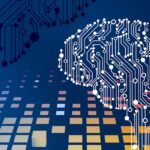Google Imagen represents a significant leap in the realm of artificial intelligence, particularly in the field of image generation. Developed by Google Research, this advanced AI model is designed to create high-quality images from textual descriptions, showcasing the remarkable capabilities of machine learning and natural language processing. The introduction of Google Imagen has sparked interest not only among tech enthusiasts but also within various industries that rely on visual content.
By transforming simple text prompts into vivid images, Google Imagen opens up new avenues for creativity and innovation. The technology behind Google Imagen is rooted in the principles of deep learning, where neural networks are trained on vast datasets to understand and replicate complex patterns. This model stands out due to its ability to generate images that are not only visually appealing but also contextually relevant to the input it receives.
As a result, it has the potential to revolutionize how we approach design, marketing, and even entertainment, making it a pivotal tool in the ongoing evolution of digital content creation.
Key Takeaways
- Google Imagen is a powerful AI image generation tool developed by Google.
- AI image generation involves using neural networks to create realistic and high-quality images.
- Google Imagen offers features such as image synthesis, style transfer, and image manipulation.
- The tool uses neural networks to analyze and learn from large datasets of images to generate new content.
- Google Imagen has applications in design, art, and creativity, allowing users to generate unique and original images.
- Using Google Imagen can save time and effort in creating images for various purposes.
- However, potential limitations and challenges include ethical considerations and the risk of misuse.
- It is important to consider ethical implications such as copyright and privacy when using AI image generation tools.
- When comparing Google Imagen with other tools, consider factors such as ease of use, features, and ethical considerations.
- Tips for using Google Imagen effectively include understanding its features and experimenting with different settings.
- Future developments in AI image generation with Google Imagen may include improved algorithms and expanded features.
Understanding AI Image Generation
AI image generation is a fascinating intersection of computer science and artistic expression, where algorithms are employed to create images based on specific inputs. At its core, this technology leverages deep learning techniques, particularly generative adversarial networks (GANs) and diffusion models, to produce images that can mimic real-world objects or abstract concepts. The process typically involves training a model on a diverse dataset containing millions of images and their corresponding textual descriptions, allowing the AI to learn the relationships between words and visual elements.
One of the most compelling aspects of AI image generation is its ability to produce unique images that have never been seen before. Unlike traditional image editing software, which relies on existing images as a foundation, AI models like Google Imagen can synthesize entirely new visuals based on user-defined parameters. This capability not only enhances creativity but also democratizes access to high-quality imagery, enabling individuals and businesses without extensive design resources to generate professional-grade visuals.
Exploring Google Imagen’s Features
Google Imagen boasts a range of features that set it apart from other image generation tools. One of its most notable attributes is its ability to understand nuanced textual prompts, allowing users to specify intricate details about the desired image. For instance, a user could input a description such as “a serene landscape with rolling hills under a vibrant sunset,” and Google Imagen would generate an image that captures this scene with remarkable fidelity.
This level of detail is made possible through advanced natural language processing techniques that enable the model to interpret and visualize complex ideas. Another key feature of Google Imagen is its focus on high-resolution output. Many AI image generators produce images that may lack clarity or detail, but Google Imagen is designed to create sharp, high-quality visuals suitable for various applications.
This emphasis on resolution makes it particularly appealing for professional use in fields such as advertising, where image quality can significantly impact consumer perception. Additionally, Google Imagen allows for iterative refinement; users can modify their prompts and regenerate images, facilitating an interactive creative process that encourages experimentation.
How Google Imagen Uses Neural Networks
At the heart of Google Imagen’s functionality lies a sophisticated architecture of neural networks that work in tandem to generate images from text. The model employs a transformer-based architecture, which has proven effective in various natural language processing tasks. This architecture allows Google Imagen to process and understand the intricacies of language, enabling it to generate images that accurately reflect the user’s intent.
The training process for Google Imagen involves exposing the neural network to vast amounts of data, including images paired with descriptive text. Through this exposure, the model learns to identify patterns and correlations between words and visual elements. Once trained, the neural network can take a new textual prompt and generate an image by predicting pixel values based on its learned representations.
This process is further enhanced by techniques such as attention mechanisms, which allow the model to focus on specific parts of the input text when generating corresponding visual features.
Applications of Google Imagen in Design and Creativity
The applications of Google Imagen extend far beyond mere novelty; they encompass a wide array of practical uses in design and creativity. For graphic designers, marketers, and content creators, the ability to generate custom images on demand can streamline workflows and enhance productivity. For instance, a marketing team could quickly produce visuals for social media campaigns or promotional materials without relying on stock images or extensive design resources.
In the realm of art and illustration, Google Imagen offers artists a new medium for exploration. By inputting imaginative prompts, artists can generate unique pieces that serve as inspiration or even as final works. This capability encourages collaboration between human creativity and machine-generated art, leading to innovative outcomes that challenge traditional notions of authorship and artistic expression.
Furthermore, educators can leverage Google Imagen in classrooms to teach concepts related to art, design, and technology, fostering an environment where students can experiment with AI-driven creativity.
Advantages of Using Google Imagen for Image Generation
One of the primary advantages of using Google Imagen is its ability to produce high-quality images quickly and efficiently. In an age where visual content is paramount for engagement across digital platforms, having access to a tool that can generate stunning visuals in seconds is invaluable. This efficiency not only saves time but also reduces costs associated with hiring professional designers or purchasing stock images.
Moreover, Google Imagen’s versatility allows it to cater to various industries and use cases. Whether it’s creating illustrations for children’s books, designing marketing materials for businesses, or generating concept art for video games, the model’s adaptability makes it a powerful asset across different domains. Additionally, its user-friendly interface enables individuals with little to no technical expertise to harness its capabilities effectively, democratizing access to advanced image generation technology.
Potential Limitations and Challenges of Google Imagen
Despite its impressive capabilities, Google Imagen is not without limitations and challenges. One significant concern is the potential for bias in generated images. Since the model learns from existing datasets that may contain biased representations or stereotypes, there is a risk that these biases could be reflected in the images it produces.
This issue raises important questions about accountability and fairness in AI-generated content. Another challenge lies in the interpretation of complex prompts. While Google Imagen excels at understanding straightforward descriptions, it may struggle with more abstract or ambiguous requests.
For example, generating an image based on a metaphorical phrase or an intricate narrative may lead to results that do not align with user expectations. This limitation highlights the ongoing need for refinement in AI models and underscores the importance of user feedback in improving their performance.
Ethical Considerations in AI Image Generation
The rise of AI image generation tools like Google Imagen brings forth a host of ethical considerations that must be addressed as technology continues to evolve. One pressing issue is the question of copyright and ownership over AI-generated content. As these tools become more prevalent in creative industries, determining who holds the rights to an image created by an AI model becomes increasingly complex.
This ambiguity could lead to legal disputes and challenges regarding intellectual property. Additionally, there are concerns about the potential misuse of AI-generated images for deceptive purposes. The ability to create hyper-realistic visuals raises ethical dilemmas related to misinformation and deepfakes.
For instance, malicious actors could use AI-generated images to fabricate news stories or manipulate public opinion. As such, it is crucial for developers and users alike to engage in responsible practices when utilizing these technologies and consider implementing safeguards against misuse.
Comparing Google Imagen with Other Image Generation Tools
When comparing Google Imagen with other image generation tools available in the market, several distinctions emerge that highlight its unique strengths and capabilities. For instance, OpenAI’s DALL-E has garnered attention for its ability to create imaginative visuals from textual prompts; however, Google Imagen often surpasses it in terms of image quality and resolution. Users frequently note that Google Imagen produces sharper and more detailed images than many competing models.
Another notable comparison can be made with Midjourney, which focuses on artistic styles and aesthetics. While Midjourney excels at generating stylized artwork based on user input, Google Imagen tends to prioritize realism and clarity in its outputs. This difference makes each tool suitable for different applications; designers seeking photorealistic imagery may prefer Google Imagen, while those looking for artistic interpretations might gravitate toward Midjourney.
Tips for Using Google Imagen Effectively
To maximize the potential of Google Imagen for image generation, users should consider several best practices when crafting their prompts. First and foremost, specificity is key; providing detailed descriptions can significantly enhance the quality of the generated images. Instead of using vague terms like “a dog,” users might specify “a golden retriever puppy playing in a sunny park,” which helps guide the model toward producing more relevant visuals.
Additionally, experimenting with different phrasing can yield varied results. Users should feel encouraged to iterate on their prompts by rewording or adding context until they achieve their desired outcome. Utilizing adjectives and adverbs can also enrich the descriptions provided to Google Imagen, allowing for more nuanced interpretations that align closely with user intent.
Future Developments and Innovations in AI Image Generation with Google Imagen
As technology continues to advance at a rapid pace, the future developments surrounding Google Imagen promise exciting innovations in AI image generation. One area ripe for exploration is the integration of augmented reality (AR) capabilities within the platform. By allowing users to visualize generated images in real-world contexts through AR technology, Google Imagen could enhance user engagement and provide new avenues for creative expression.
Furthermore, ongoing research into improving neural network architectures may lead to even more sophisticated models capable of understanding context at deeper levels. Future iterations of Google Imagen could incorporate multi-modal learning approaches that combine text, audio, and visual data for richer outputs. Such advancements would not only elevate the quality of generated images but also expand their applicability across diverse fields such as education, entertainment, and virtual reality experiences.
In conclusion, as we look ahead at the trajectory of AI image generation technologies like Google Imagen, it becomes clear that they hold immense potential for transforming creative processes across various industries while also posing important ethical questions that must be navigated thoughtfully.









